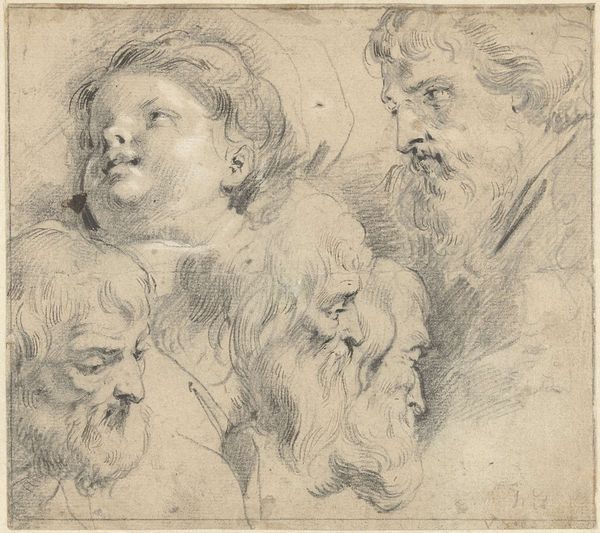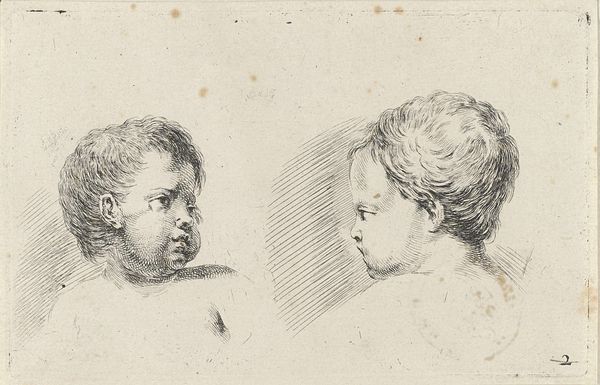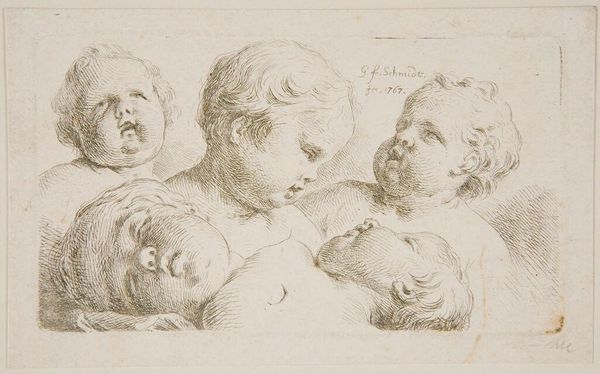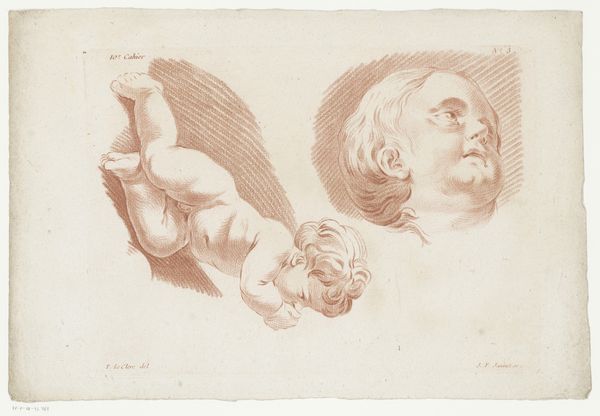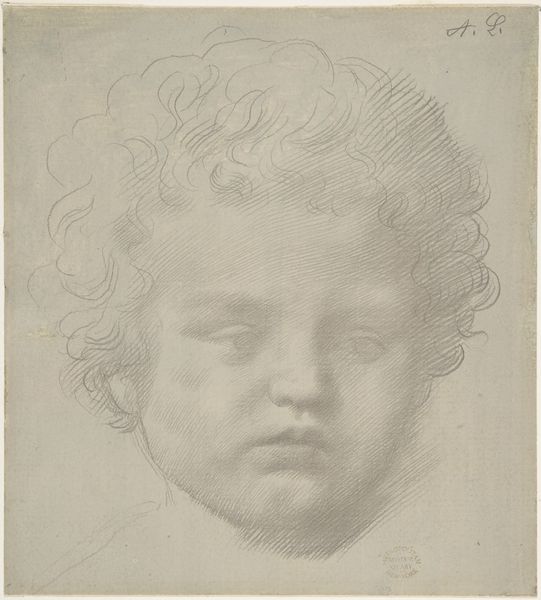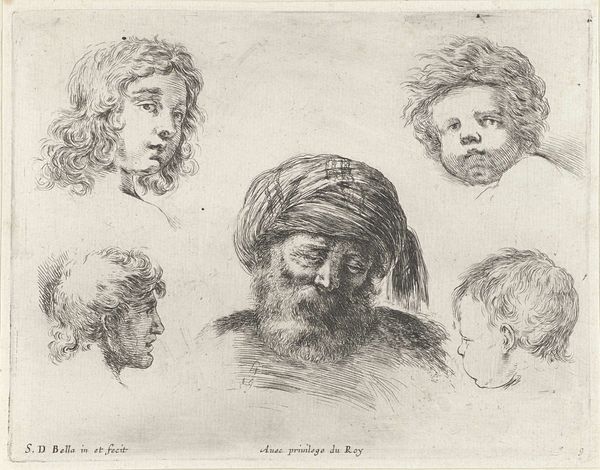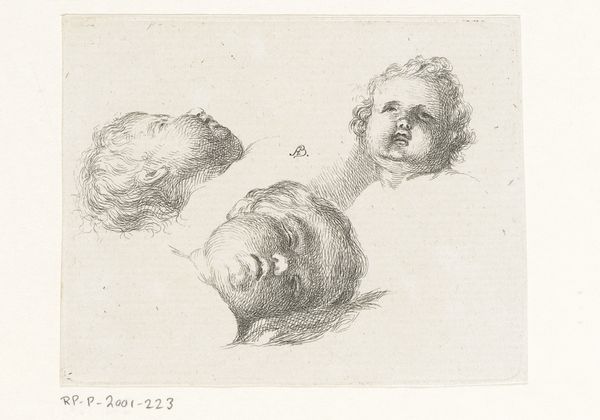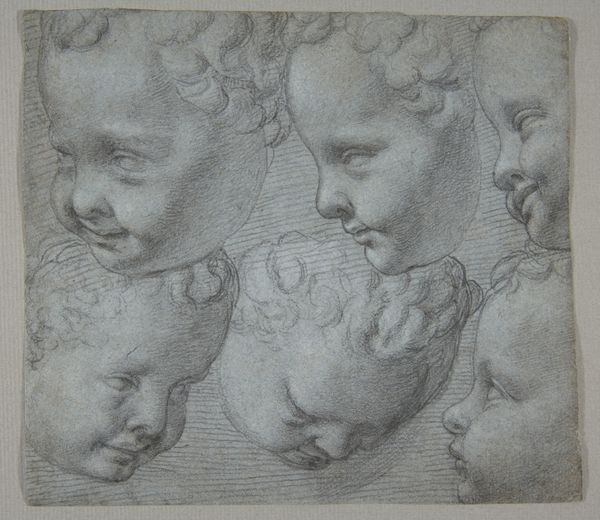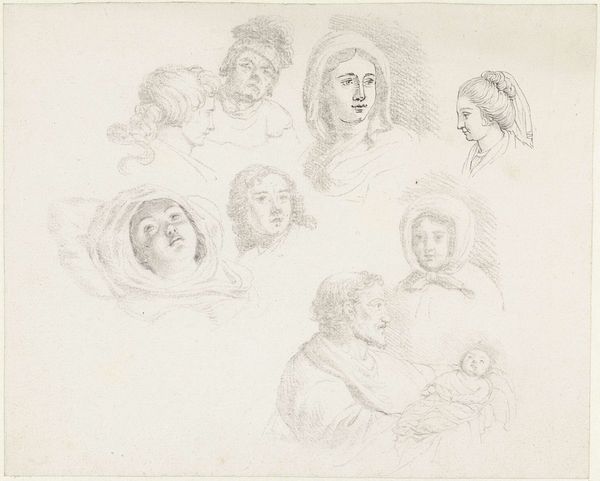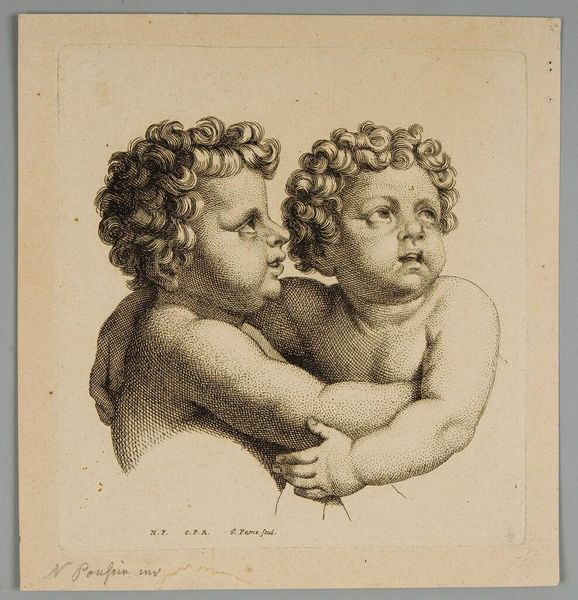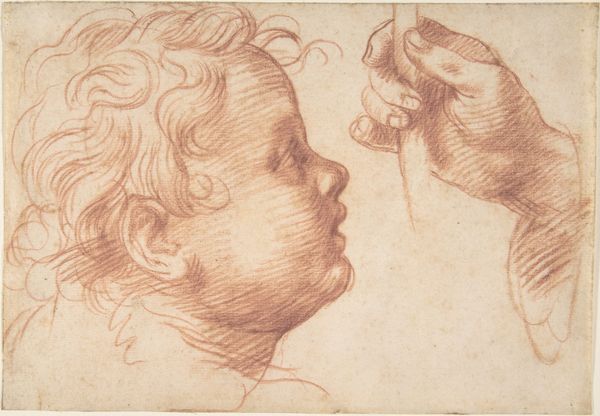
drawing, dry-media, pencil
#
portrait
#
pencil drawn
#
drawing
#
neoclacissism
#
charcoal drawing
#
figuration
#
form
#
dry-media
#
pencil drawing
#
pencil
#
portrait drawing
#
academic-art
#
realism
Dimensions: height 231 mm, width 287 mm
Copyright: Rijks Museum: Open Domain
Here we see Willem van Leen's 1790 sketch of cherubic children’s heads, rendered with soft gradations of light and shadow. These aren't just portraits; they are echoes of the classical putto, a motif rooted in antiquity and reborn during the Renaissance. These figures, often representing divine love or innocence, link back to ancient depictions of Eros or Cupid. Van Leen’s cherubs are a continuation of this tradition, yet they also carry the sentimental weight of the Enlightenment, embodying a newfound appreciation for childhood. Consider how these images resonate across time. The cherub, initially a symbol of sacred love, has, through cultural osmosis, become a secular emblem of affection and nostalgia. This evolution speaks volumes about how symbols adapt, their meanings layered and transformed by collective memory. Such imagery evokes deeply ingrained emotions. The cherubic face stirs feelings of tenderness, innocence, and a longing for a prelapsarian state. Thus, the putto, now a cherub, persists, constantly reshaped by the currents of history, retaining its power to evoke profound emotional responses.
Comments
No comments
Be the first to comment and join the conversation on the ultimate creative platform.


